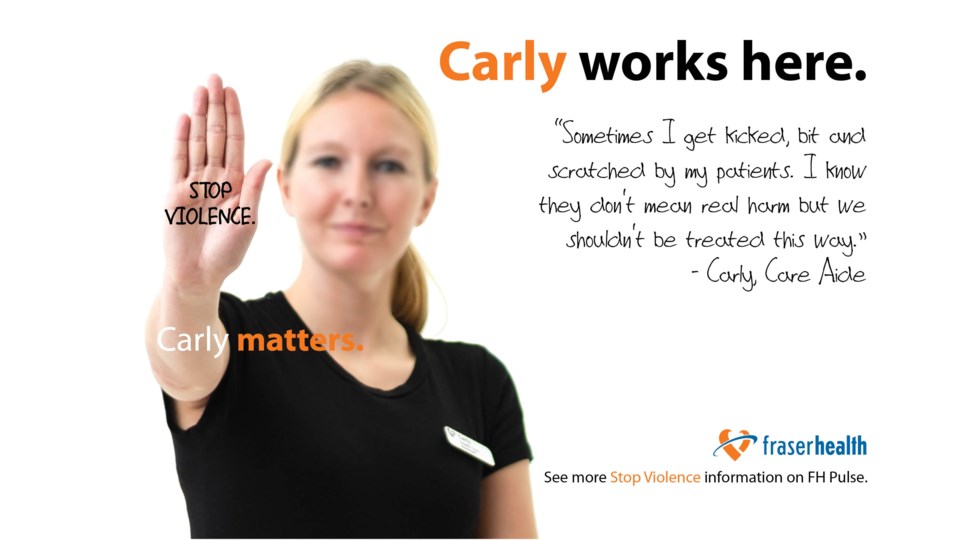Care-aide Carly Cojocariu is the poster child for workplace violence at Burnaby Hospital.
During eight years of helping patients at the local health-care facility eat, bathe, dress, walk and go to the bathroom, she’s taken her share of verbal and physical abuse.
“I’ve been scratched, punched, bit, kicked, spat in the face, grabbed. I get a lot of grabbing the wrist,” she told the NOW. “A lot in the stomach, I get kicked a lot in the stomach.”
Reported incidents of violence have been on the rise at Burnaby Hospital over the last three years, jumping from 22 in 2013 to 36 last year, according to the Fraser Health Authority.
The incidents take a toll, according to the Hospital Employees’ Union (HEU), which represents care-aides.
“Not only is there often a physical impact from a violent situation,” HEU secretary-business manager Jennifer Whiteside said. “There’s also emotional trauma attached to that. And workers working in an environment where that is a chronic part of their work, can wind up becoming afraid to come to work.”
To tackle workplace violence at all its facilities, Fraser Health has ramped up prevention efforts over the last year, including a first-of-its-kind poster campaign featuring testimonials from health-care workers like Cojocariu.
“The violence comes from the patients or it comes from the family members, and we want to get them to understand the impact of their actions,” Fraser Health’s managing workplace health consultant Quinn Danyluk said of the campaign. “It’s a pretty unique approach for us.”
Other steps to curb workplace violence include a new specialized regional violence prevention team and violence prevention risk assessments at every department (about 800 in total) in all Fraser Health facilities by fall 2017.
Cojocariu is also among a growing number of healthcare workers equipped with four-hour violence prevention classes and eight-hour advance team response classes.
Danyluk said the increase in reported incidents of violence at Burnaby Hospital isn’t necessarily a bad thing
“We work really hard to encourage everyone to report any kind of incident related to violence,” he said. “As our education has increased and expanded, we’ve seen a corresponding increase with the number of incidents reported.”
Because the increase in reported violence hasn’t come with a corresponding spike in reported injuries and WorkSafeBC claims, Danyluk said the increased reporting is a good sign.
But, for care-aides like Cojocariu, violence in the workplace is a problem that hasn’t seen improvement, according to Whiteside.
“In particular for care-aides, injury rates haven’t shifted; in fact, they’re increasing, so that says to me that there’s something not working,” she said.
Whiteside said it’s important for health authority’s to have violence prevention goals and to support robust risk assessments, increased reporting and thorough investigation of violent incidents, but more is needed.
“Unless you can move that support right down to the frontline level, there will be very little change,” she said.
Cojocariu, however, said the classes she’s taken over the last year have helped her deal more effectively with violent and aggressive patients in her department, which houses mostly seniors, many of whom are dealing with dementia.
One point the sessions drove home, she said, was the importance of finding out as much as possible about the source of a patient’s aggression.
“A really important thing is to try to get families involved with the care, to try to find out the most information, try to find out a little bit about their past,” Cojocariu said.



